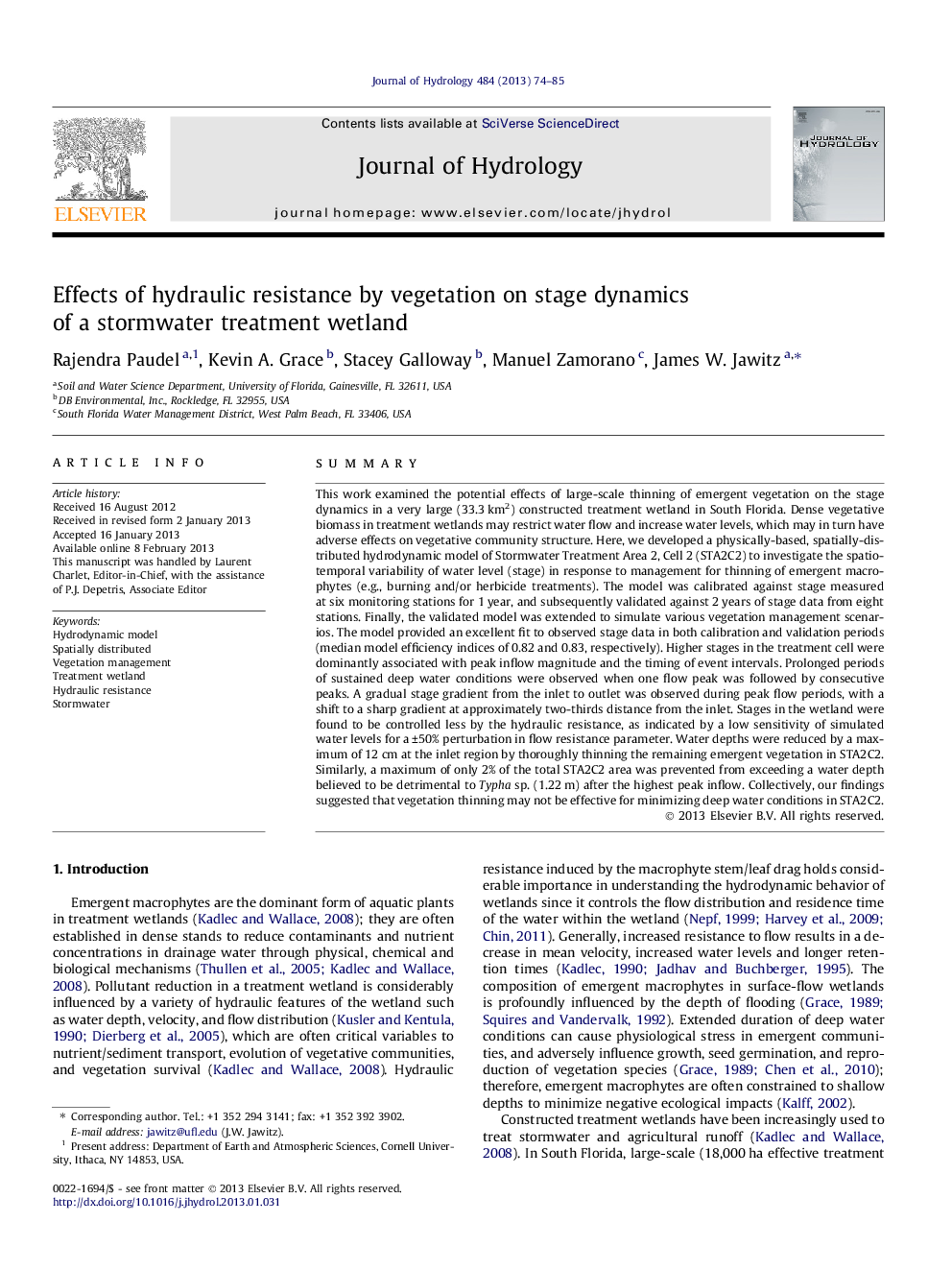| کد مقاله | کد نشریه | سال انتشار | مقاله انگلیسی | نسخه تمام متن |
|---|---|---|---|---|
| 6413825 | 1629964 | 2013 | 12 صفحه PDF | دانلود رایگان |
SummaryThis work examined the potential effects of large-scale thinning of emergent vegetation on the stage dynamics in a very large (33.3 km2) constructed treatment wetland in South Florida. Dense vegetative biomass in treatment wetlands may restrict water flow and increase water levels, which may in turn have adverse effects on vegetative community structure. Here, we developed a physically-based, spatially-distributed hydrodynamic model of Stormwater Treatment Area 2, Cell 2 (STA2C2) to investigate the spatio-temporal variability of water level (stage) in response to management for thinning of emergent macrophytes (e.g., burning and/or herbicide treatments). The model was calibrated against stage measured at six monitoring stations for 1 year, and subsequently validated against 2 years of stage data from eight stations. Finally, the validated model was extended to simulate various vegetation management scenarios. The model provided an excellent fit to observed stage data in both calibration and validation periods (median model efficiency indices of 0.82 and 0.83, respectively). Higher stages in the treatment cell were dominantly associated with peak inflow magnitude and the timing of event intervals. Prolonged periods of sustained deep water conditions were observed when one flow peak was followed by consecutive peaks. A gradual stage gradient from the inlet to outlet was observed during peak flow periods, with a shift to a sharp gradient at approximately two-thirds distance from the inlet. Stages in the wetland were found to be controlled less by the hydraulic resistance, as indicated by a low sensitivity of simulated water levels for a ±50% perturbation in flow resistance parameter. Water depths were reduced by a maximum of 12 cm at the inlet region by thoroughly thinning the remaining emergent vegetation in STA2C2. Similarly, a maximum of only 2% of the total STA2C2 area was prevented from exceeding a water depth believed to be detrimental to Typha sp. (1.22 m) after the highest peak inflow. Collectively, our findings suggested that vegetation thinning may not be effective for minimizing deep water conditions in STA2C2.
⺠We examined the effects of large-scale management of treatment wetland vegetation. ⺠Hydraulic resistance had relatively minor impacts on stage dynamics. ⺠Peak inflow magnitude and the timing have significant effects at inlet zones. ⺠Vegetation thinning may not be effective for minimizing deep water conditions.
Journal: Journal of Hydrology - Volume 484, 25 March 2013, Pages 74-85
